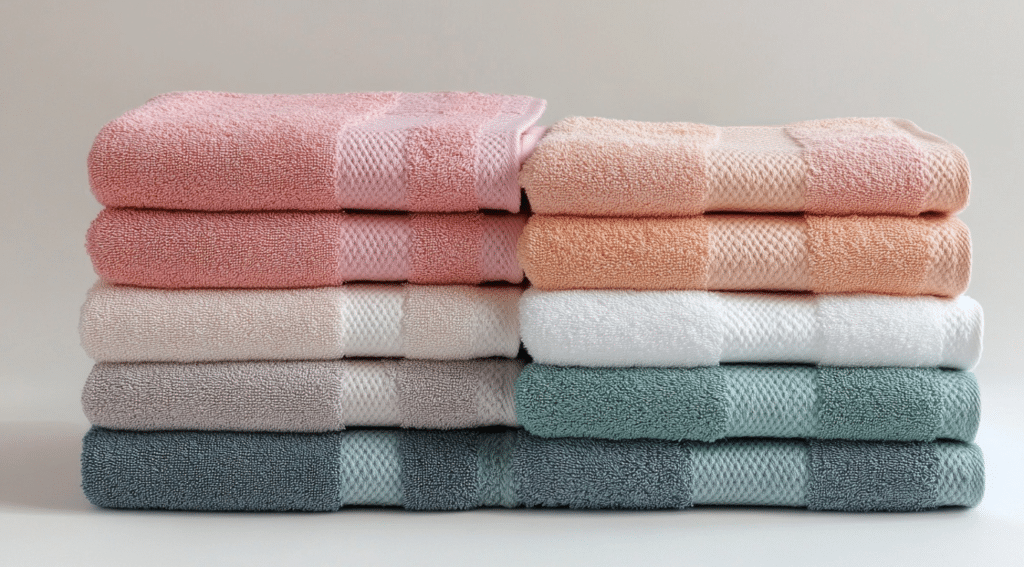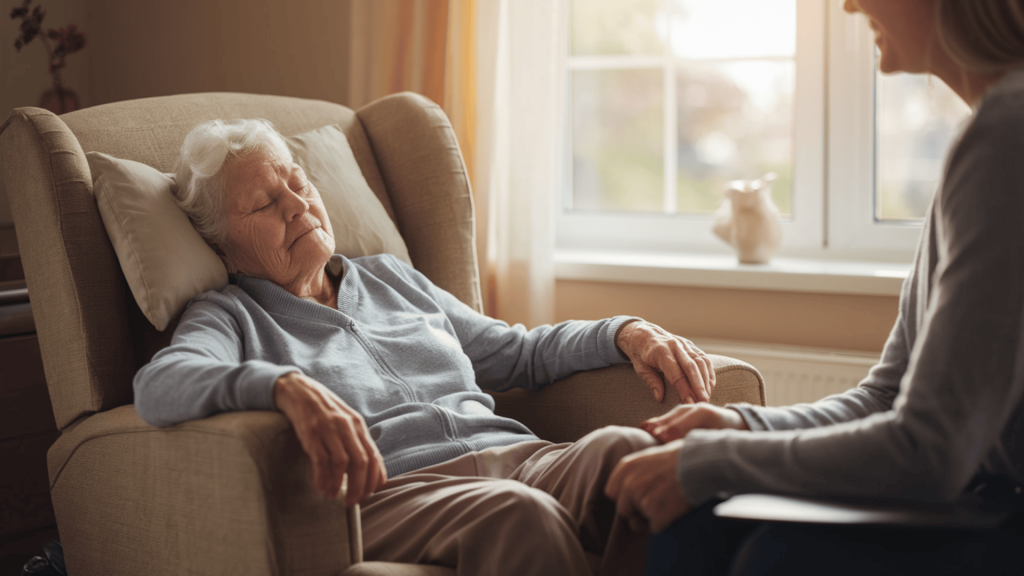Ever feel like your pillow just isn’t quite right? The size of your pillow actually plays a bigger role in your sleep and comfort than most people realize. It can even change how your bed looks and feels.
If you’ve been asking yourself what size a standard pillow is, you’re not alone, and you’re in the right place.
In this guide, I’ll walk you through everything you need to know about pillow sizes. You’ll learn the exact dimensions, how they fit different beds, and which size works best for you.
I’ll also share simple tips to help you choose the right pillow, whether you’re buying new ones or updating what you already have.
What is a Standard Pillow Size?
A standard pillow measures 20 x 26 inches, or 51 x 66 centimeters. This size works well for twin, full, and queen beds.
| Measurement | Inches | Centimeters |
|---|---|---|
| Width | 20 | 51 |
| Length | 26 | 66 |
Standard pillows fit most beds and work for most people. They’re the most common size you’ll find in stores.
Some brands make their “standard” pillows slightly different. The difference is usually small, maybe an inch or two. This won’t affect how they work on your bed.
Pillow Sizes Chart
So, what size is a standard pillow, and how does it stack up against others? Let’s compare the most common pillow sizes side by side for a clearer view.
| Pillow Type | Dimensions (inches) | Best For |
|---|---|---|
| Standard | 20 x 26 | Twin, full, queen beds |
| Queen | 20 x 30 | Queen beds |
| King | 20 x 36 | King beds |
| Euro | 26 x 26 | Decorative backing |
| Body | 20 x 54 | Side sleepers, pregnancy |
| Boudoir | 12 x 16 | Small decorative accent |
| Toddler | 14 x 19 | Children’s beds |
Most queen beds look good with two standard pillows. You can also use two queen pillows for more width.
King beds typically use three standard pillows or two king pillows. The choice depends on your preference and bedroom style.
How to Choose the Right Pillow Size for Your Bed
Picking the right pillow size isn’t just about comfort; it also depends on the size of your bed. Some sizes fit better, look neater, or feel more spacious depending on how much room you have.
Here’s a simple breakdown to help you match the right pillow to your bed size:
1. Twin & Full Beds
One standard pillow works perfectly for twin beds. It gives you enough support without looking too big. Full beds can use one or two standard pillows. Two pillows give you more options for sleeping positions.
Some people prefer one queen pillow on a full bed. This gives you more width and feels more luxurious.
2. Queen Beds
Queen beds work well with two standard pillows. This is the most popular choice for couples. You can also use two queen pillows.
They’re four inches wider and fill the bed better. This looks more proportional to some people.
3. King Beds
King beds have more space to work with. You can use three standard pillows across the width. Two king pillows also work well.
They give each person more pillow space and look balanced on the large bed. Some people mix sizes. They might use two king pillows for sleeping and add decorative pillows in front.
Pillow Sizes by Sleeping Style
- Side sleepers do well with a standard pillow that has enough height to support the neck. Medium to firm support works best. If you tend to move around, a queen or king pillow gives more room so you don’t slip off the edge.
- Back sleepers usually find standard pillows comfortable. What matters more is firmness; medium support helps keep the neck in a natural curve.
- Stomach sleepers need a soft, thin pillow. A standard size works well because it doesn’t lift the neck too much, which helps keep the spine aligned during sleep.
Standard vs. Queen vs. King: Which Should You Get?
Standard pillows are often the most practical choice. They cost less than queen or king pillows, fit more readily available pillowcases, and suit most sleeping positions.
If you sleep alone or share a bed, they usually provide enough support and space, especially if you aren’t moving around too much at night.
Queen pillows offer a bit more width, which can make a difference for restless sleepers or those who like more room.
They’re a popular upgrade from standard size because they still fit on most beds without feeling oversized.
King pillows are the largest and provide the most space from edge to edge. They’re designed to look proportional on king-size beds and are great for people who want plenty of surface area. Some also use them for back support when sitting up in bed.
In terms of price, standard pillows tend to be the most affordable. Queen and king sizes usually cost a bit more, but the price difference isn’t huge.
Standard pillows also tend to be more widely available in stores and online, which can make shopping easier.
Pillow Fill Types Available in Standard Size

Not all standard pillows feel the same; what’s inside makes a big difference. From soft and fluffy to firm and supportive, the right fill can change how well you sleep.
Here’s a simple guide to the most common pillow fill types available in standard size and what they’re best for:
| Fill Type | Feel | Best For | Care |
|---|---|---|---|
| Down | Soft, fluffy | Side & back sleepers | Dry clean / spot clean |
| Down-Alt | Light, soft | Allergy-prone, budget users | Machine washable |
| Memory Foam | Firm, contouring | Neck pain, firm support | Spot clean only |
| Latex | Springy, cool | Hot sleepers, long-term use | Spot clean / hand wash |
| Gel/Bamboo/Hybrid | Cool, mixed feel | Hot sleepers, varied needs | Varies by type |
Pillowcase & Cover Sizing Guide
Standard pillowcases are made to fit 20 x 26-inch pillows but are usually about 21 x 27 inches to allow room for easy insertion.
If the case is too small, it’ll be tight and hard to fit. Too large, and the pillow may shift or look sloppy.
Envelope closures help keep pillows in place without ties or zippers. For memory foam pillows, zippered covers offer better support and stay in shape during washing.
Common Pillow Buying Mistakes to Avoid
- Choosing the wrong size for your bed can throw off both comfort and appearance. Make sure the pillow fits your mattress size.
- Ignoring your sleep position can lead to poor neck support. Match your pillow’s firmness and loft to how you sleep, side, back, or stomach.
- Buying based on looks alone often means sacrificing comfort. Focus on how it feels, not just how it matches your bedding.
- Overlooking care instructions may leave you with a pillow that’s hard to clean. Always check if it’s machine washable or spot-clean only.
- Using worn-out pillows for too long can cause neck pain or sleep issues. Replace them when they go flat, lumpy, or lose support.
Final Thoughts
I hope this helped you feel more confident about choosing the right pillow. Figuring out what size is a standard pillow, and how it compares to others, can take some pressure off the decision.
You’ve learned how size affects your sleep, your space, and even how easy it is to care for.
If you’re like me, comfort matters just as much as fit. And when your pillow feels right, everything else seems to fall into place.
If you’re curious about what else can help improve your sleep setup, I’ve got more for you. Check out my other blogs on mattress sizes and simple ways to make your bed more comfortable.











